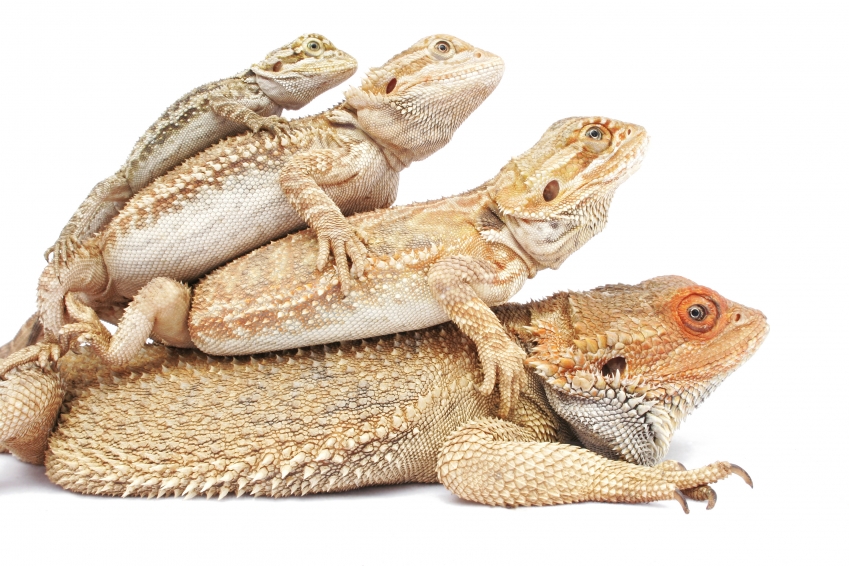Bearded Dragon STL: A Beginner's Guide to Keeping a Lizard as a Pet in St. Louis
Introduction
Are you looking for a fascinating and low-maintenance pet that will liven up your home? A bearded dragon may be the perfect fit for you! But before you bring this incredible reptile home, there are a few things you need to know about their care and keeping in St. Louis. In this beginner’s guide, we’ll cover the basics of bearded dragon care, as well as where to find them and how to integrate them into your household in the STL area.
About Bearded Dragons
Bearded dragons are fascinating reptiles that hail from Australia, and make wonderful pets. These lizards are friendly, low-maintenance, and can easily adapt to life in captivity. They are called bearded dragons because of the ‘beard’ of spiny scales they are able to puff up under their throats when they feel threatened.
Bearded dragons are fascinating to watch and are full of personality. They can grow up to a couple of feet in length and can live for up to 20 years, so they are a long-term commitment. In terms of their diet, bearded dragons are omnivores, and their diet should include both animal and plant matter. Baby bearded dragons may require more animal protein in their diet to support growth, while adults tend to eat more vegetables.
Bearded Dragon Care
As previously mentioned, bearded dragons are low-maintenance pets, but they still require daily care and attention. One of the most important aspects of their care is ensuring their habitat is clean and sanitary. Like most reptiles, bearded dragons are susceptible to infections from unclean living areas.

Bearded dragons can be kept in a vivarium or terrarium, which is a glass enclosure that serves as their living quarters. The enclosure should be large enough for the bearded dragon to move around comfortably and should include a basking area where they can soak up warmth and UV rays. Bearded dragons require a heat source to regulate their body temperature, so make sure you have a heat lamp in their enclosure.
Bearded dragons also require a specific lighting setup to stay healthy. UVB lights are necessary to help bearded dragons absorb calcium and promote strong bone growth. You should change the bulbs every six months to ensure they’re effective.
Bearded dragons should be fed a variety of food from both animal and plant sources. They can eat crickets, roaches, mealworms, and other insects, as well as vegetables such as kale, collard greens, and squash. You should avoid feeding them fruits and vegetables high in oxalates, such as spinach, as these can interfere with calcium absorption.
Finding a Bearded Dragon in St. Louis
If you’re looking to bring a bearded dragon home to St. Louis, there are many options available to you. Bearded dragons are popular pets, and many pet stores and reptile breeders stock them. You can also find bearded dragons available for adoption through animal shelters and rescue organizations in the area.

When purchasing or adopting a bearded dragon, it’s important to choose a healthy one. Look for a bearded dragon that is alert, active, and has bright eyes. Their skin should be firm, and their tail should be plump. You should also ask the breeder or store owner about the dragon’s history, including its age, diet, and any veterinary care it has received.
Integrating Your Bearded Dragon Into Your Home
Before bringing your bearded dragon home, make sure you have everything you need to create a comfortable and healthy living space for them. This includes a suitable enclosure, heat and lighting sources, and proper food and supplements.

Once your bearded dragon is settled in, it’s time to start bonding with them. Bearded dragons are social creatures and enjoy interacting with their owners. You can try hand-feeding them, handling them gently, or simply sitting by their enclosure and talking to them. With time, your bearded dragon will become more comfortable with you and will even start showing affection, such as climbing onto your shoulder or lap.
Conclusion
Bearded dragons are incredible pets that can bring joy and fascination to your life. With proper care, they can live long and healthy lives, and will quickly become beloved members of your family. In St. Louis, there are many resources available to help you find and care for a bearded dragon, so what are you waiting for? Start researching and see if a bearded dragon is right for you!
